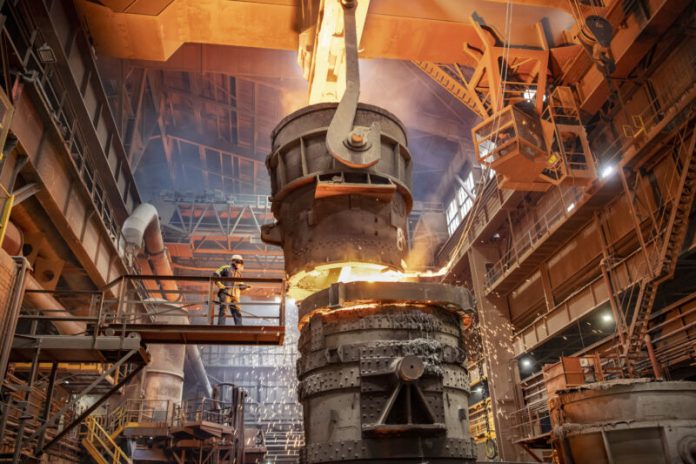Monty Rakusen/Getty
The year 2023 was a big one for climate news, from record heat to world leaders finally calling for a transition away from fossil fuels. In a lesser-known milestone, it was also the year the European Union soft-launched an ambitious new initiative that could supercharge its climate policies.
Wrapped in arcane language studded with many a “thereof,” “whereas” and “having regard to” is a policy that could not only help fund the European Union’s pledge to become the world’s first carbon-neutral continent, but also push industries all over the world to cut their carbon emissions.
It’s the establishment of a carbon price that will force many heavy industries to pay for each ton of carbon dioxide, or equivalent emissions of other greenhouse gases, that they emit. But what makes this fee revolutionary is that it will apply to emissions that don’t happen on European soil. The EU already puts a price on many of the emissions created by European firms; now, through the new Carbon Border Adjustment Mechanism, or CBAM, the bloc will charge companies that import the targeted products—cement, aluminum, electricity, fertilizer, hydrogen, iron, and steel—into the EU, no matter where in the world those products are made.
These industries are often large and stubborn sources of greenhouse gas emissions, and addressing them is key in the fight against climate change, says Aaron Cosbey, an economist at the International Institute for Sustainable Development, an environmental think tank. If those companies want to continue doing business with European firms, they’ll have to clean up or pay a fee. That creates an incentive for companies worldwide to reduce emissions.
In CBAM’s first phase, which started in October 2023, companies importing those materials into the EU must report on the greenhouse gas emissions involved in making the products. Beginning in 2026, they’ll have to pay a tariff.
Even having to supply emissions data will be a big step for some producers and could provide valuable data for climate researchers and policymakers, says Cosbey.
“I don’t know how many times I’ve gone through this exercise of trying to identify, at a product level, the greenhouse gas intensity of exports from particular countries and had to go through the most amazing, torturous processes to try to do those estimates,” he says. “And now it’s going to be served to me on a plate.”

Side benefits at home
While this new carbon price targets companies abroad, it will also help the EU to pursue its climate ambitions at home. For one thing, the extra revenues could go toward financing climate-friendly projects and promising new technologies.
But it also allows the EU to tighten up on domestic pollution. Since 2005, the EU has set a maximum, or cap, on the emissions created by a range of industrial “installations” such as oil and metal refineries. It makes companies within the bloc use credits, or allowances, for each ton of carbon dioxide—or equivalent discharges of other greenhouse gases—that they emit, up to that cap. Some allowances are currently granted for free, but others are bought at auction or traded with other companies in a system known as a carbon market.
But this idea—of making it expensive to harm the planet—creates a conundrum. If doing business in Europe becomes too expensive, European industry could flee the continent for countries that don’t have such high fees or strict regulations. That would damage the European economy and do nothing to solve the environmental crisis. The greenhouse gases would still be emitted—perhaps more than if the products had been made in Europe—and climate change would careen forward on its destructive path.
The Carbon Border Adjustment Mechanism aims to impose the same carbon price for products made abroad as domestic producers must pay under the EU’s system. In theory, that keeps European businesses competitive with imports from international rivals. It also addresses environmental concerns by nudging companies overseas toward reducing greenhouse gas emissions rather than carrying on as usual.
This means the EU can further tighten up its carbon market system at home. With international competition hopefully less of a concern, it plans to phase out some leniencies, such as some of the free emission allowances, that existed to help keep domestic industries competitive.
That’s a big deal, says Cosbey. Dozens of countries have carbon pricing systems, but they all create exceptions to keep heavy industry from getting obliterated by international competition. The carbon border tariff could allow the EU to truly force its industries—and consumers—to pay the price, he says.
“That is ambitious; nobody in the world is doing that.”
Source link
Knowable Magazine







![So much for Saquon Barkley being a ‘Giant for life’ [Update] So much for Saquon Barkley being a 'Giant for life' [Update]](https://thebusinessandfinancetoday.b-cdn.net/calrooms/2024/03/So-much-for-Saquon-Barkley-being-a-Giant-for-life-218x150.jpg)








